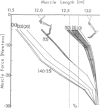Abstract
An attempt was made to determine the factors causing the load-inertia compensation that has been observed in skeletal muscle. Cat skeletal muscle force output was determined as a function of the two variables, length and stimulus pulse rate. The results were represented in a system diagram from which it becomes apparent that: (a) the length-tension relationship in muscle forms a functional, non-neural servo feedback; (b) the force-velocity curve appears as an oscillation-damping, velocity feedback in the muscle servo; (c) the nonlinear action of pulse rate on response is, in effect, in the input element to the muscle servo system. For purpose of analysis of the motor system it appears that these signal handling characteristics of muscle make it more nearly a “position servo” than a “force motor.”
Full text
PDF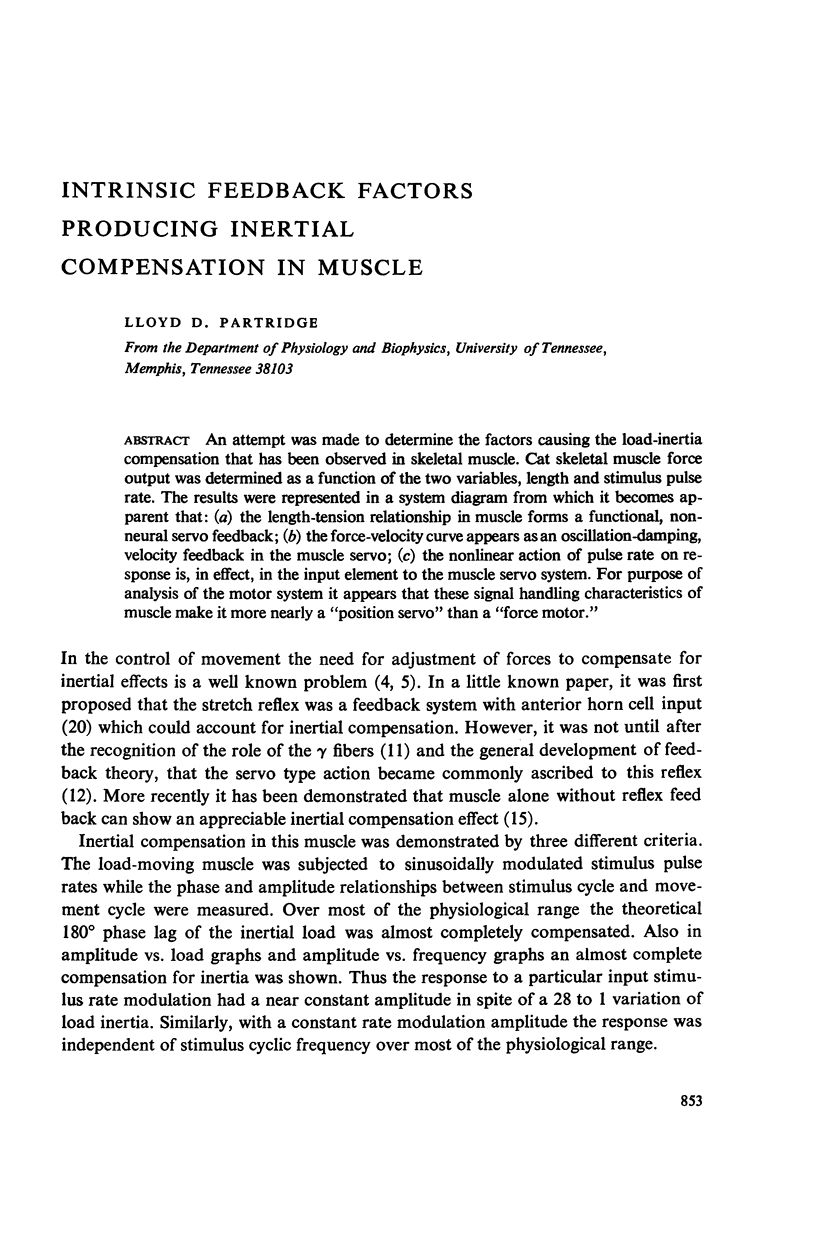

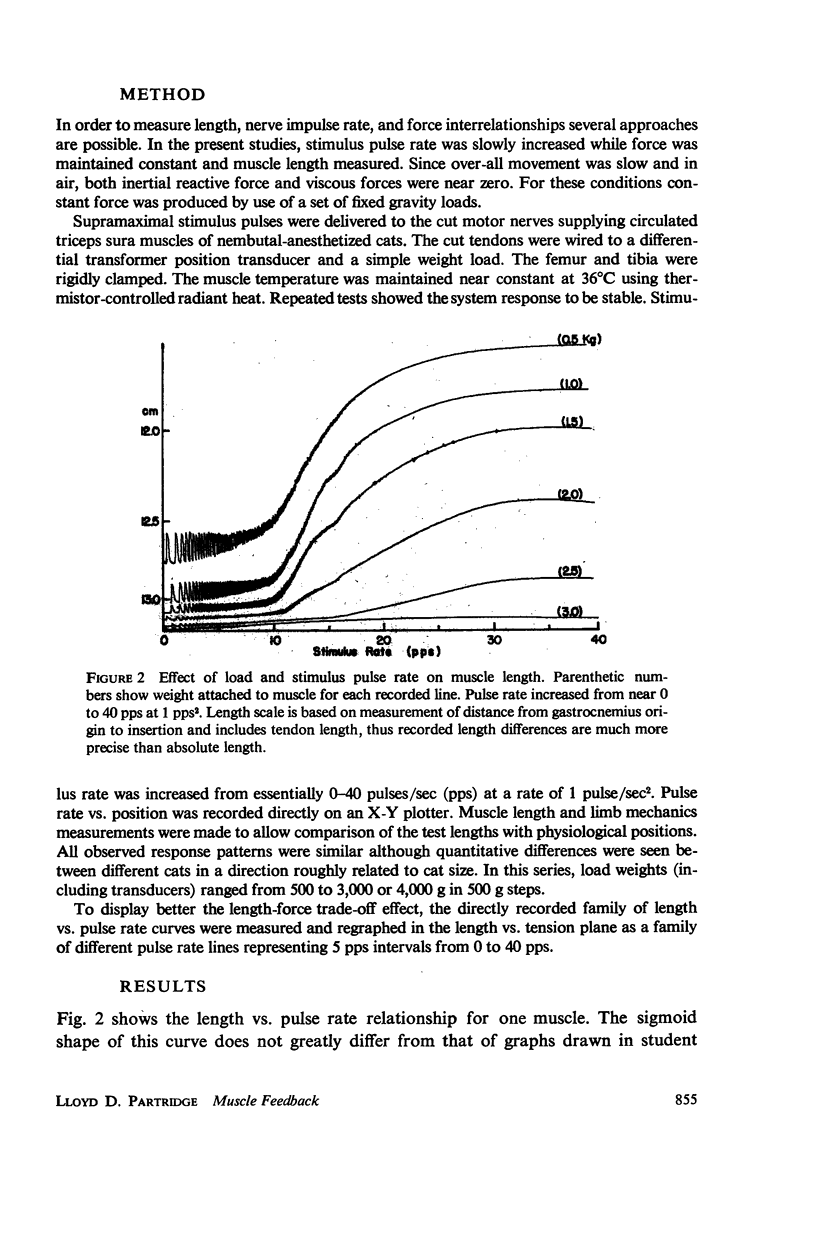
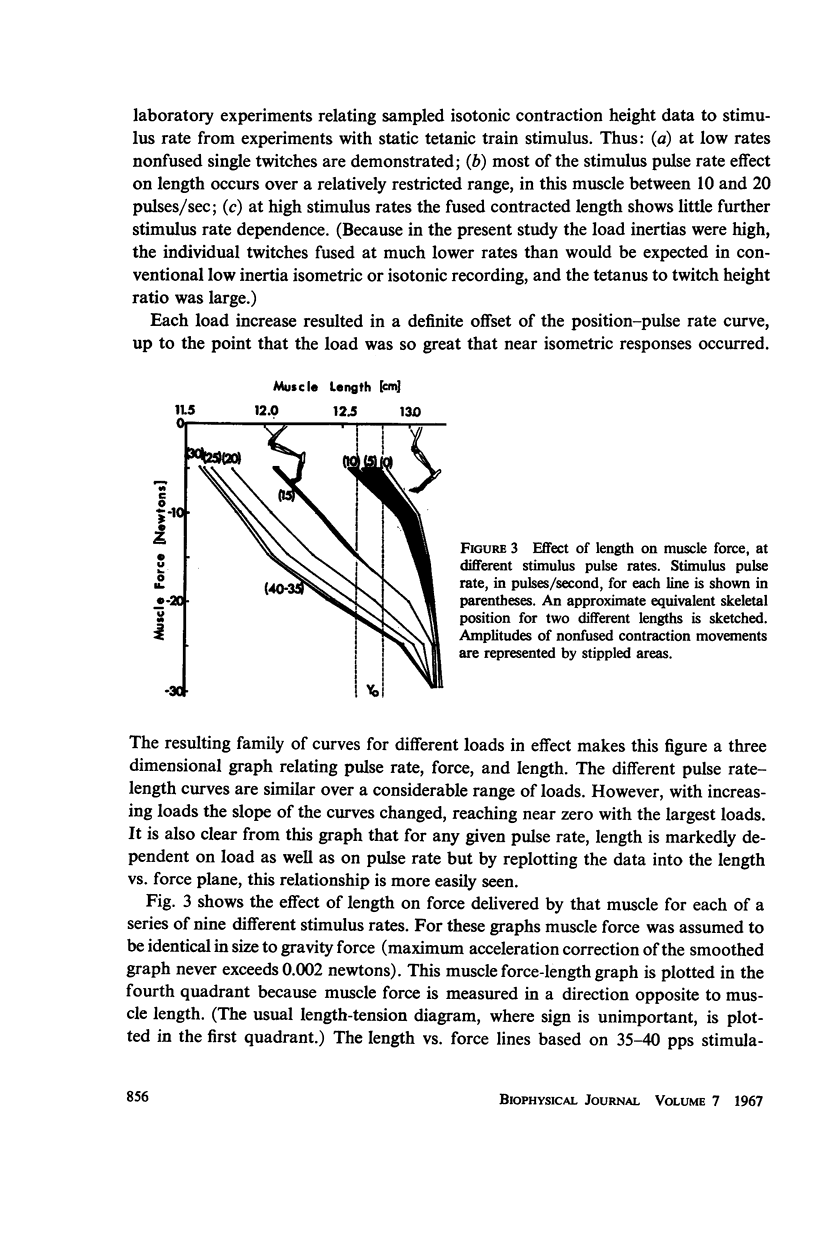
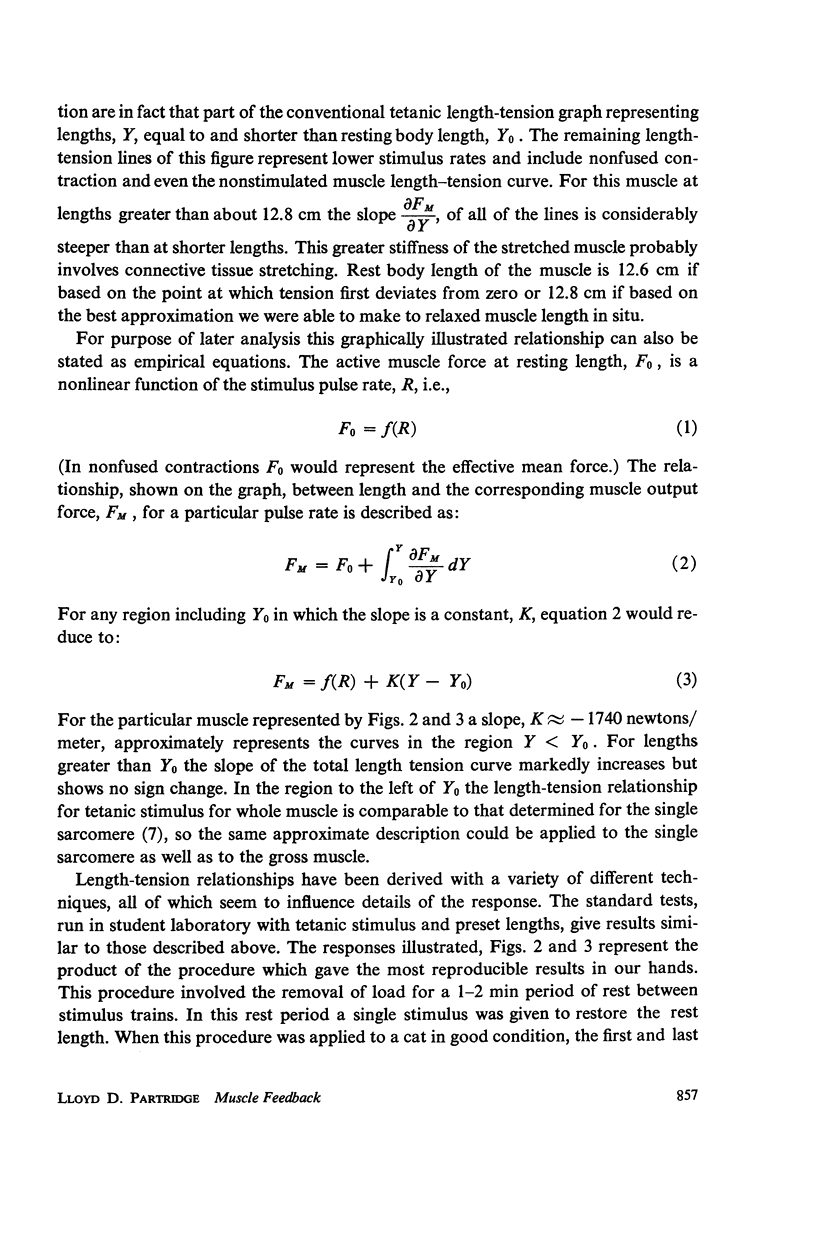
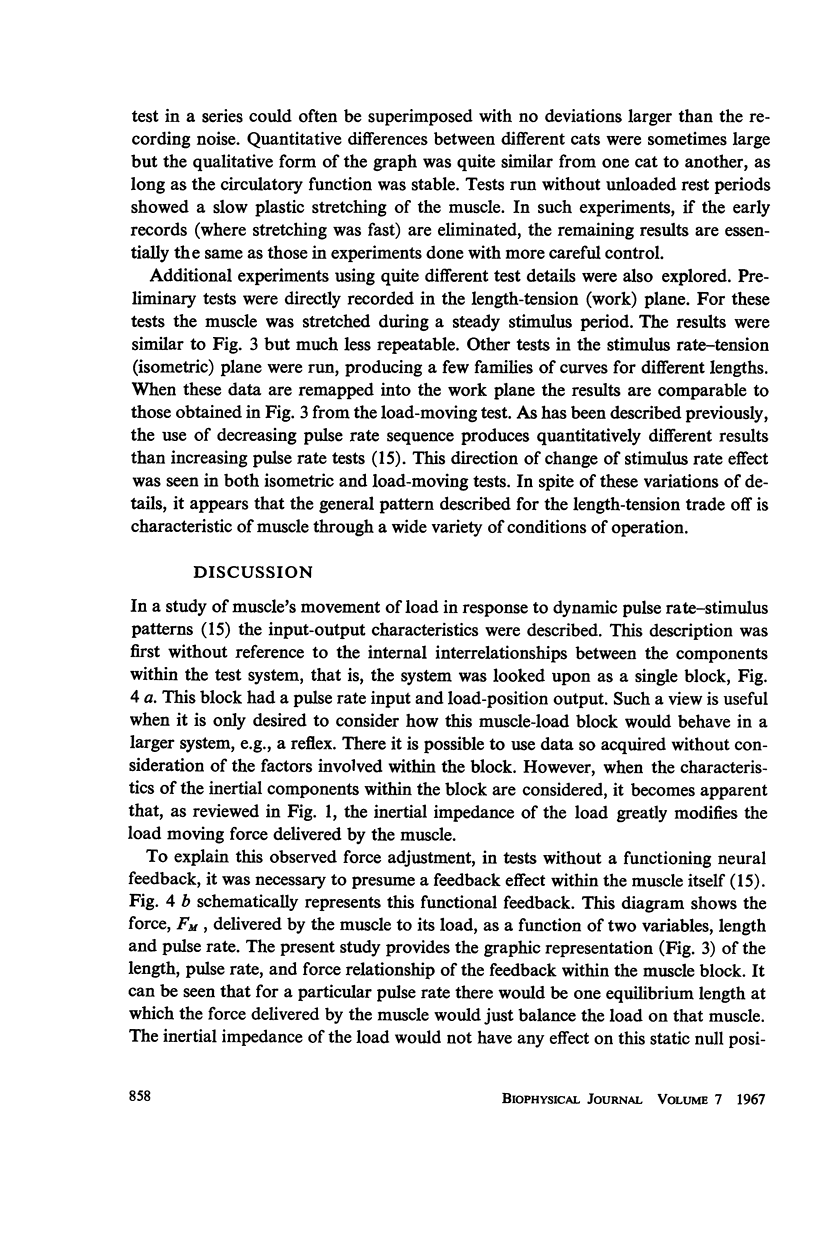

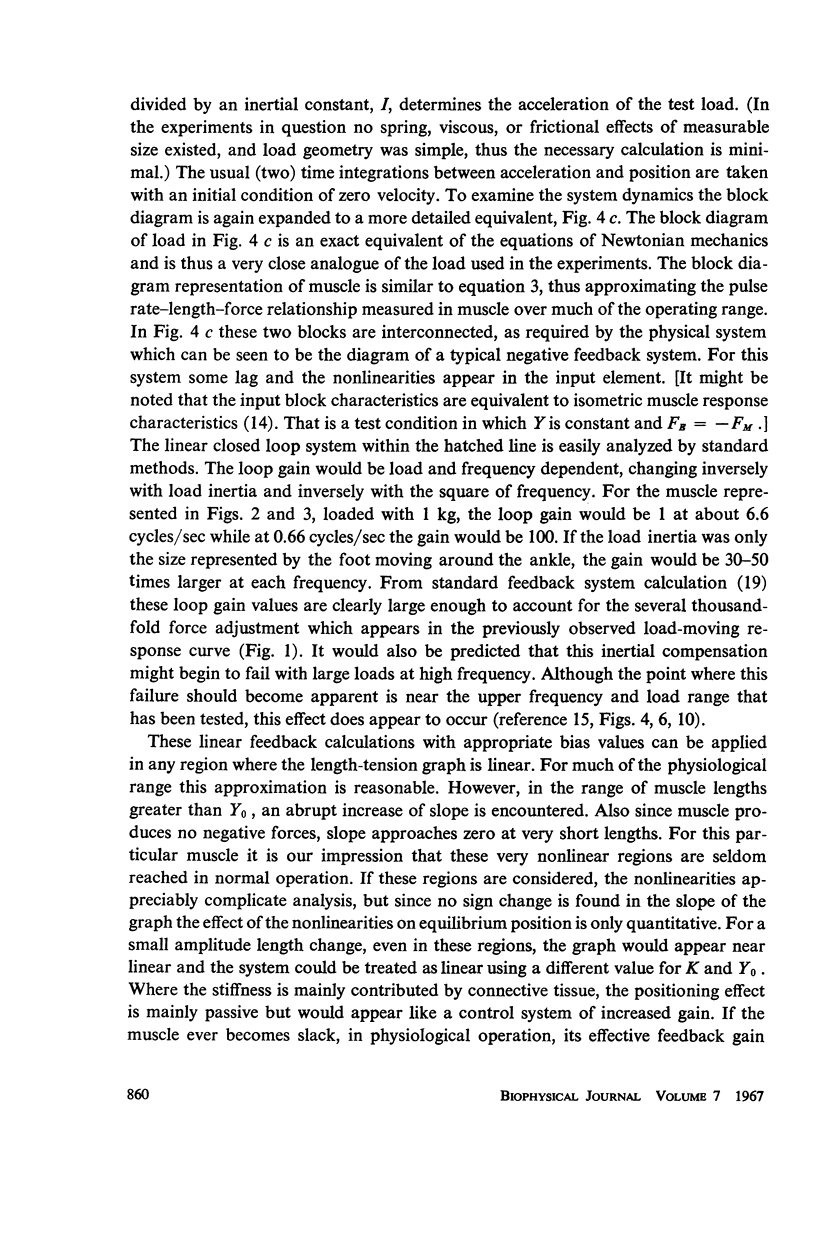
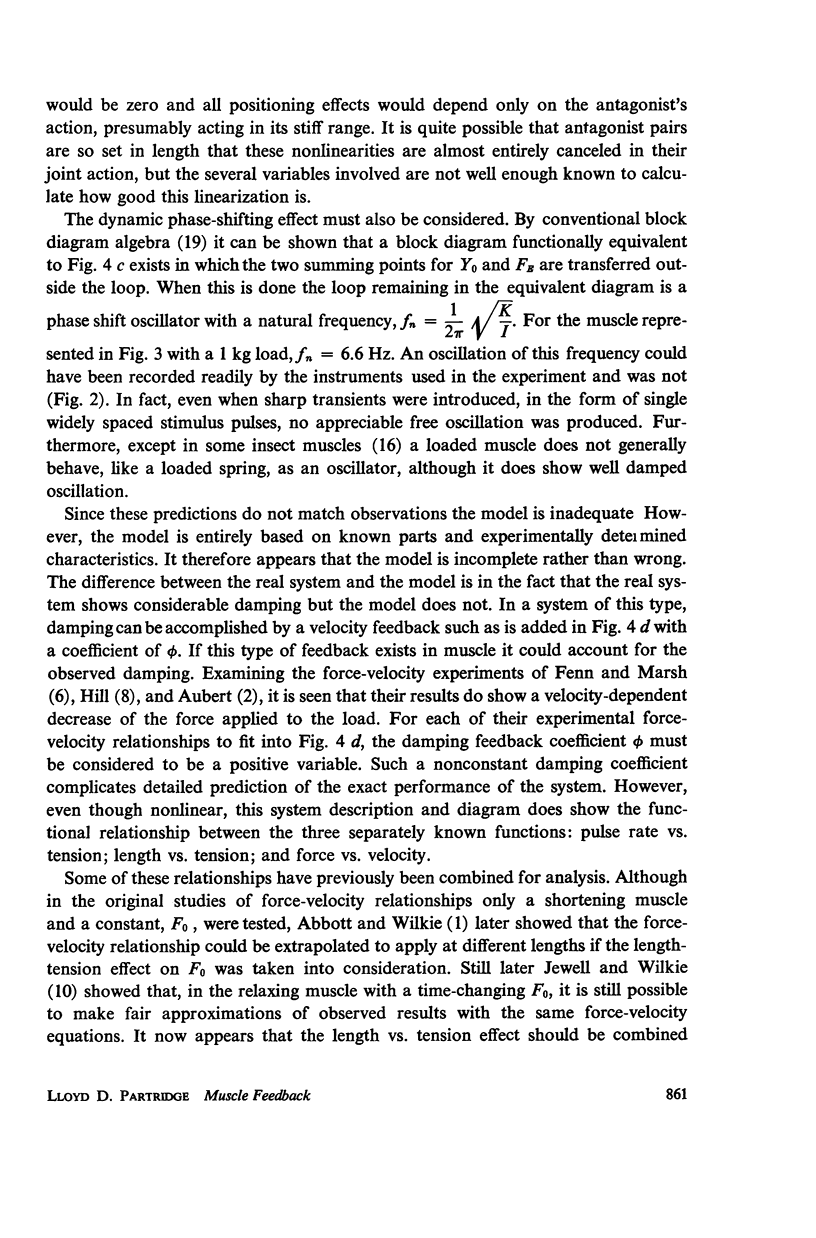
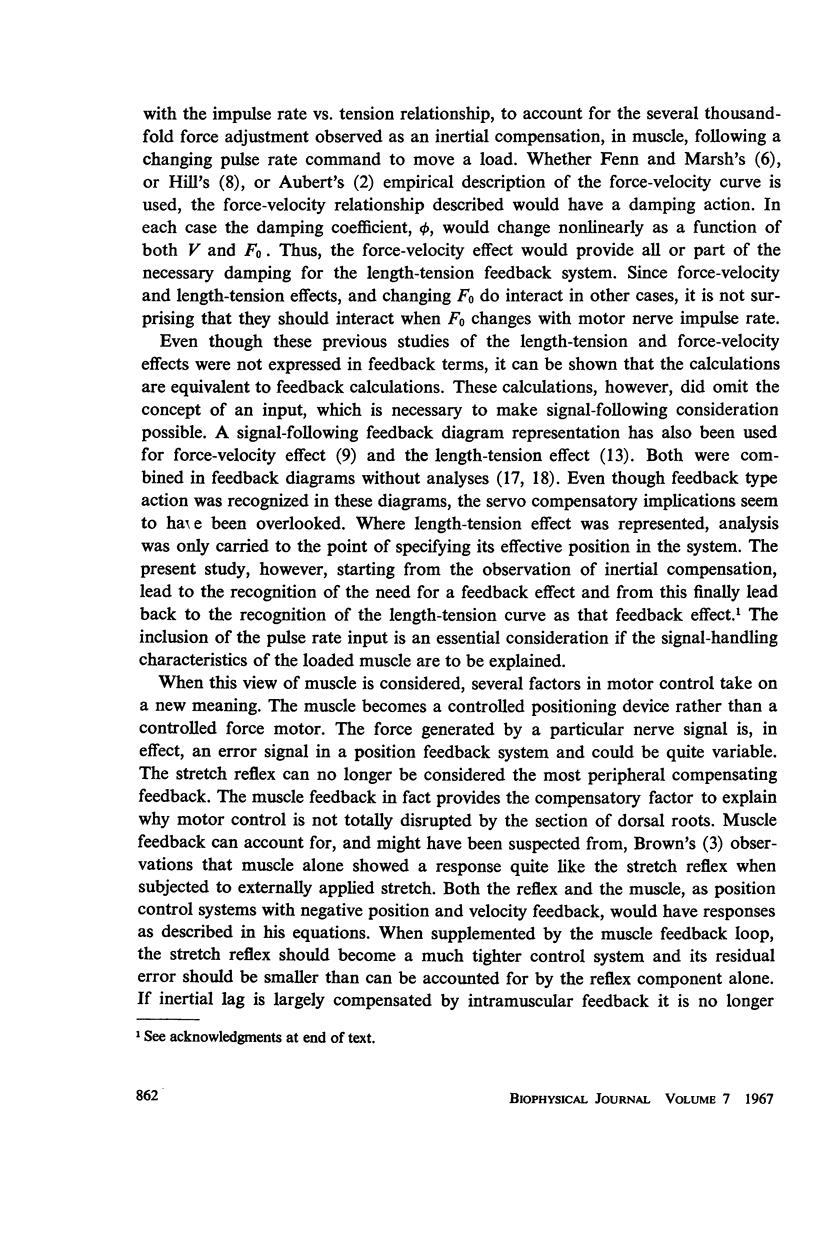
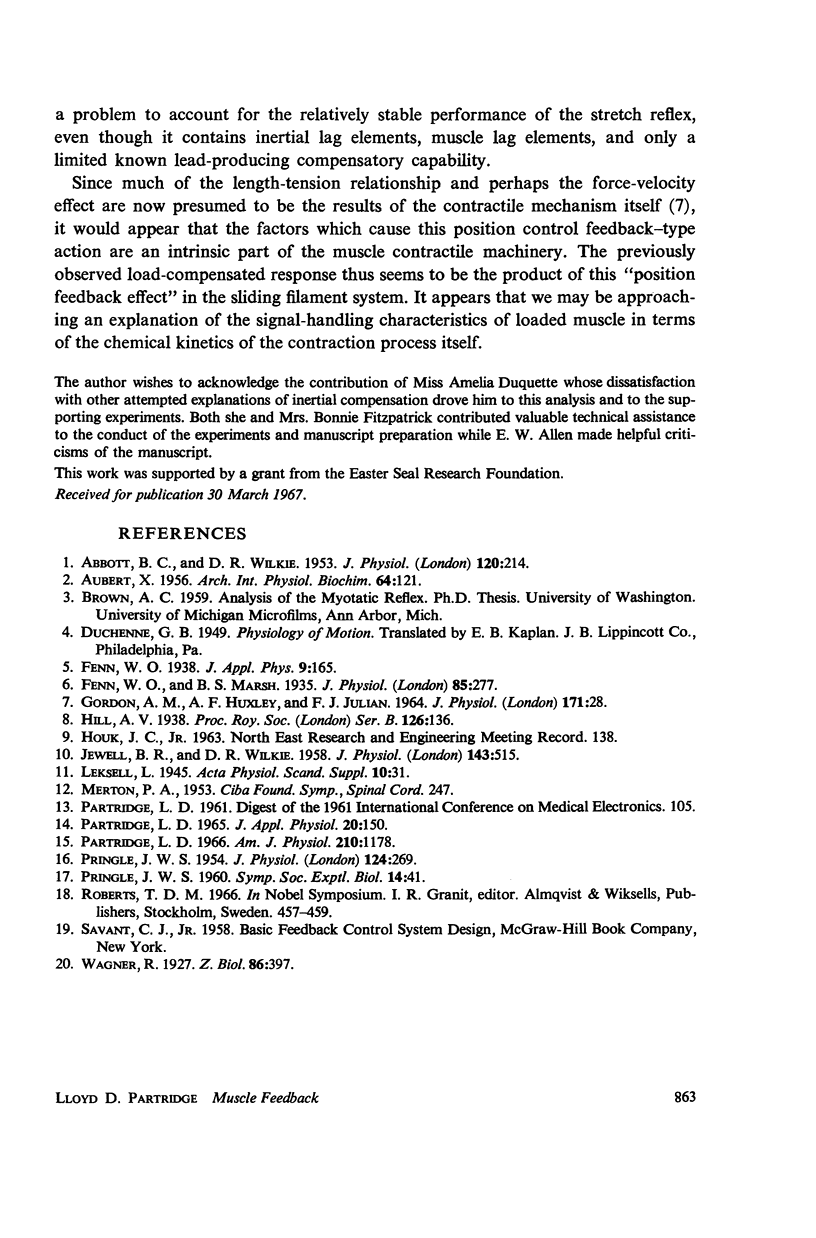
Images in this article
Selected References
These references are in PubMed. This may not be the complete list of references from this article.
- ABBOTT B. C., WILKIE D. R. The relation between velocity of shortening and the tension-length curve of skeletal muscle. J Physiol. 1953 Apr 28;120(1-2):214–223. doi: 10.1113/jphysiol.1953.sp004886. [DOI] [PMC free article] [PubMed] [Google Scholar]
- AUBERT X. La relation entre la force et la vitesse d'allongement et de raccourcissement du muscle strié. Arch Int Physiol Biochim. 1956 Jan;64(1):121–122. [PubMed] [Google Scholar]
- Fenn W. O., Marsh B. S. Muscular force at different speeds of shortening. J Physiol. 1935 Nov 22;85(3):277–297. doi: 10.1113/jphysiol.1935.sp003318. [DOI] [PMC free article] [PubMed] [Google Scholar]
- JEWELL B. R., WILKIE D. R. An analysis of the mechanical components in frog's striated muscle. J Physiol. 1958 Oct 31;143(3):515–540. doi: 10.1113/jphysiol.1958.sp006075. [DOI] [PMC free article] [PubMed] [Google Scholar]
- PARTRIDGE L. D. MODIFICATIONS OF NEURAL OUTPUT SIGNALS BY MUSCLES: A FREQUENCY RESPONSE STUDY. J Appl Physiol. 1965 Jan;20:150–156. doi: 10.1152/jappl.1965.20.1.150. [DOI] [PubMed] [Google Scholar]
- PRINGLE J. W. Models of muscle. Symp Soc Exp Biol. 1960;14:41–68. [PubMed] [Google Scholar]
- PRINGLE J. W. The mechanism of the myogenic rhythm of certain insect striated muscles. J Physiol. 1954 May 28;124(2):269–291. doi: 10.1113/jphysiol.1954.sp005106. [DOI] [PMC free article] [PubMed] [Google Scholar]
- Partridge L. D. Signal-handling characteristics of load-moving skeletal muscle. Am J Physiol. 1966 May;210(5):1178–1191. doi: 10.1152/ajplegacy.1966.210.5.1178. [DOI] [PubMed] [Google Scholar]



